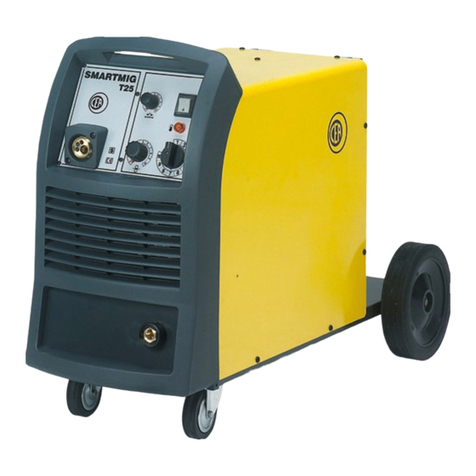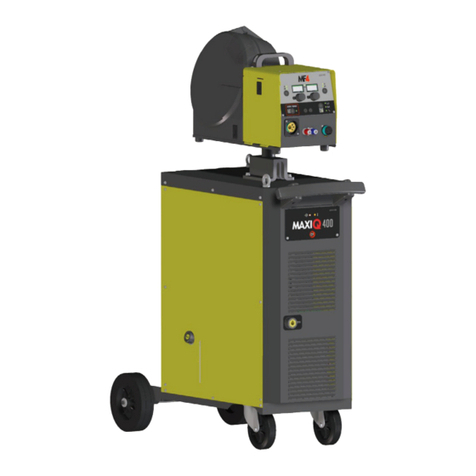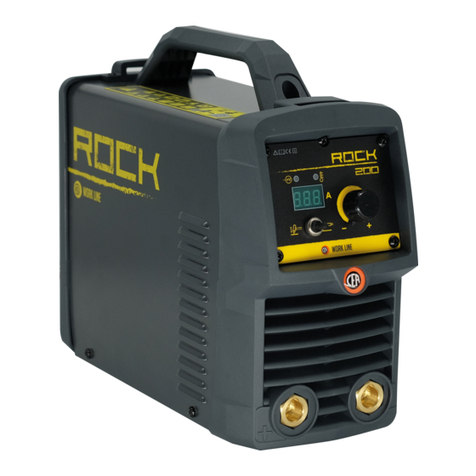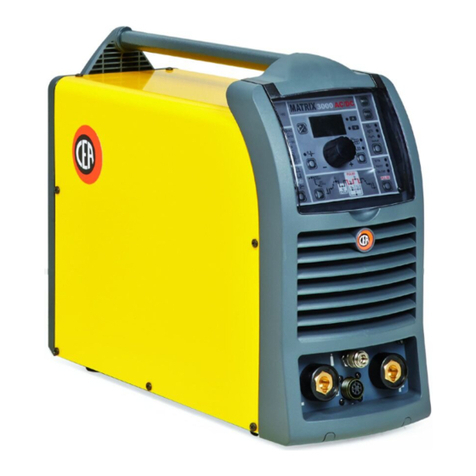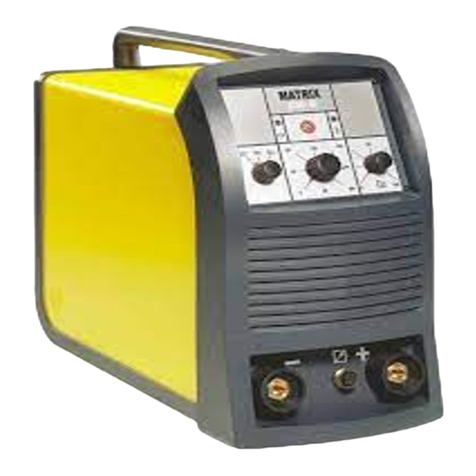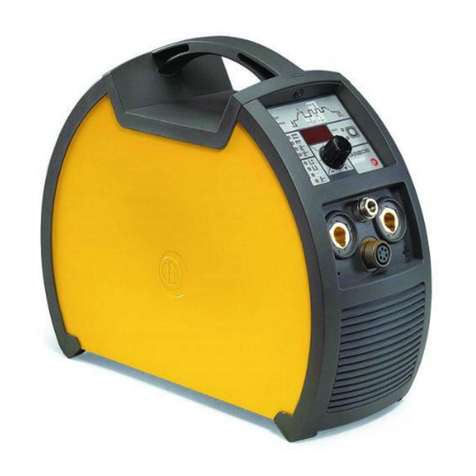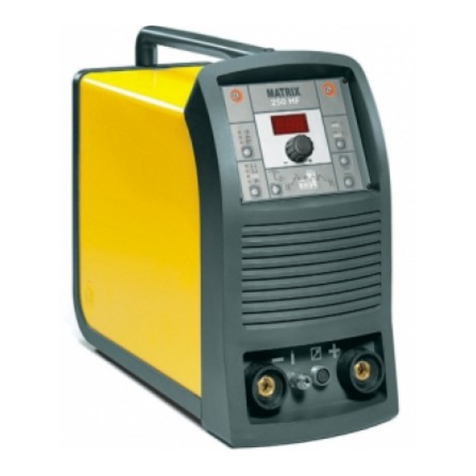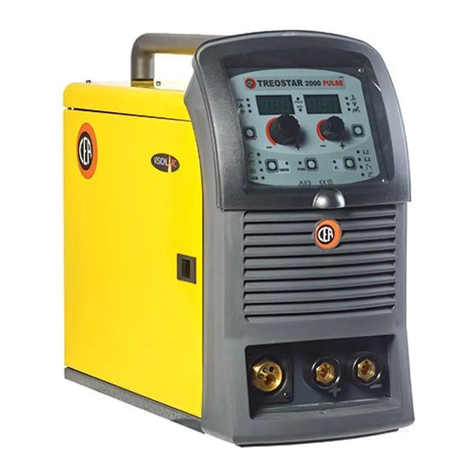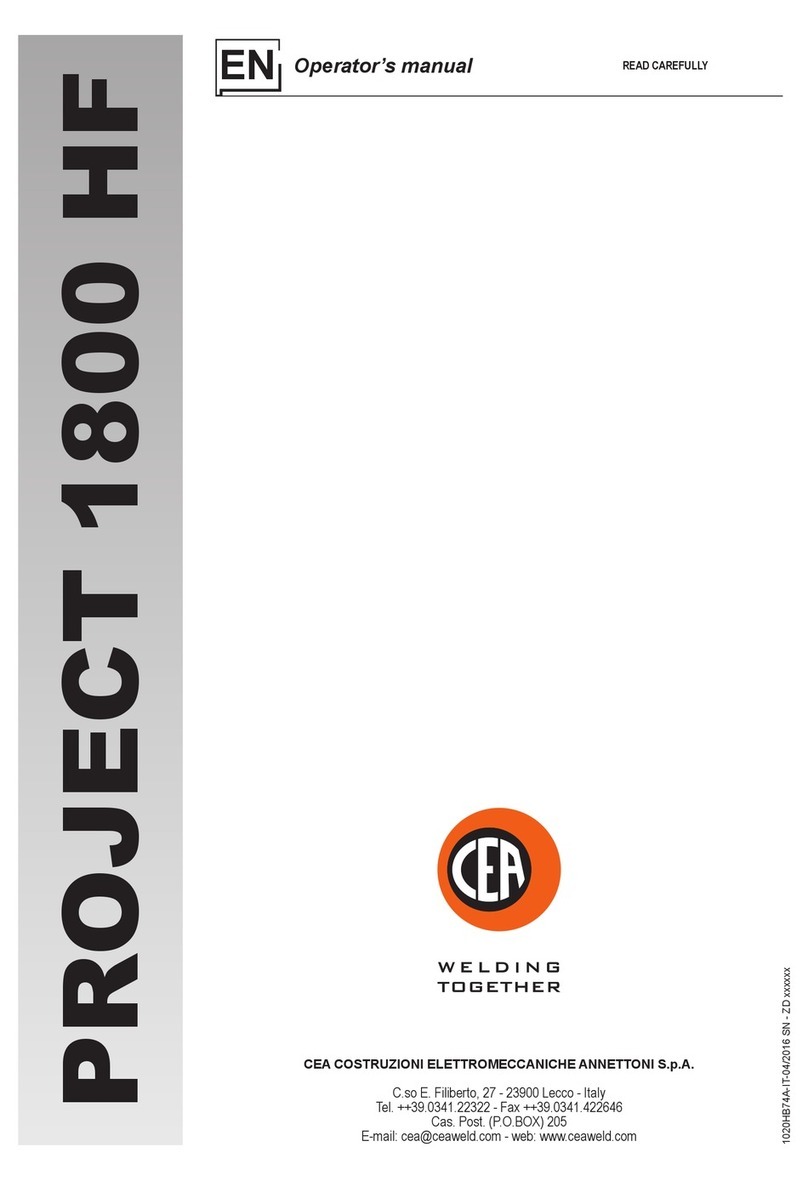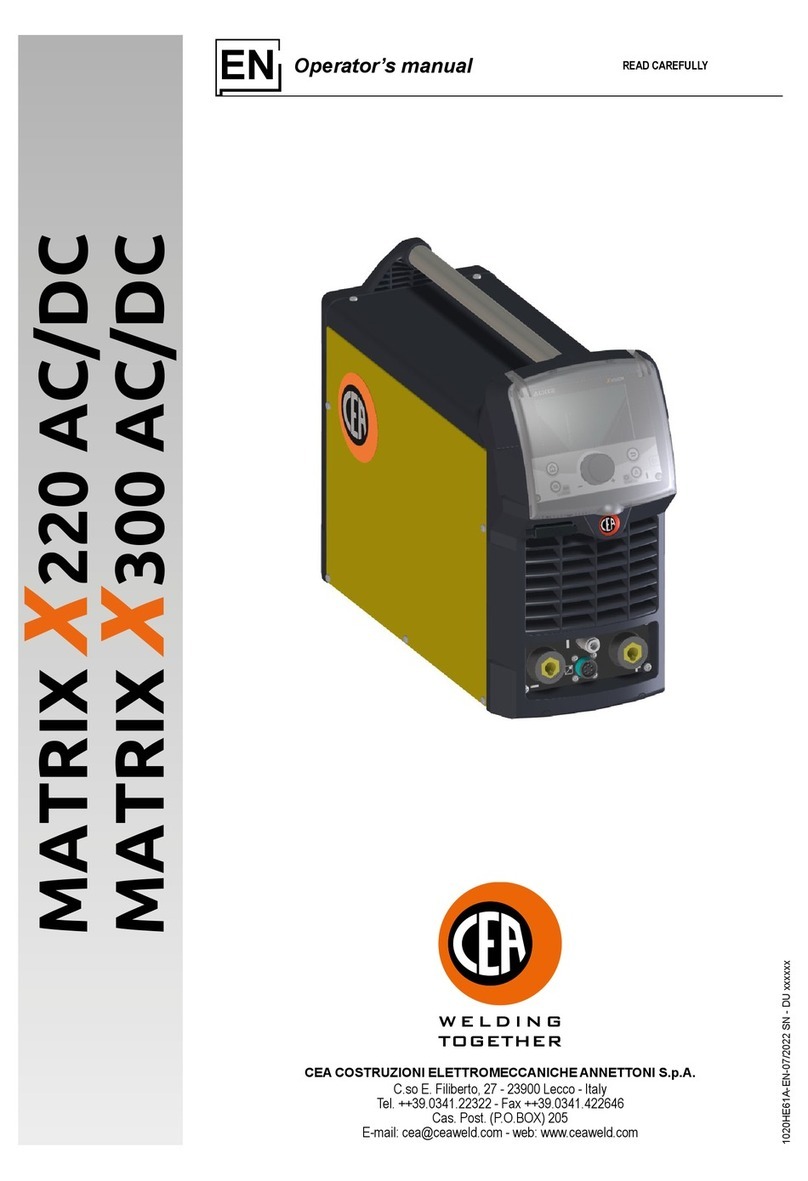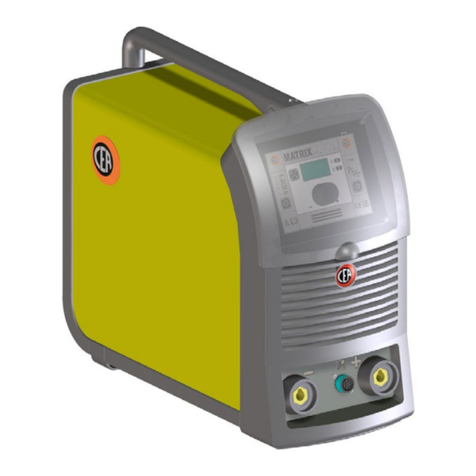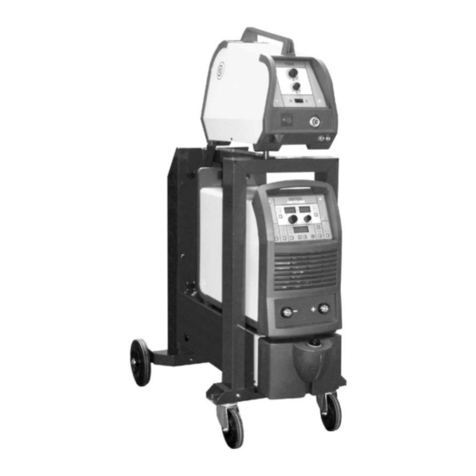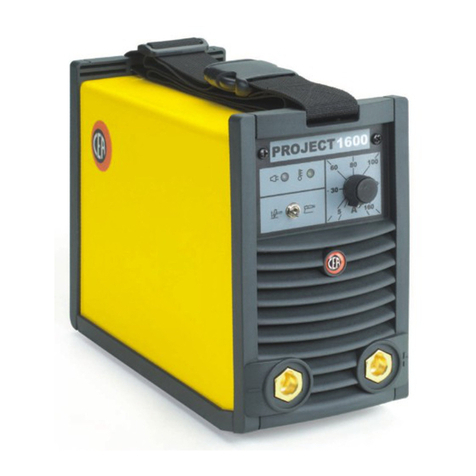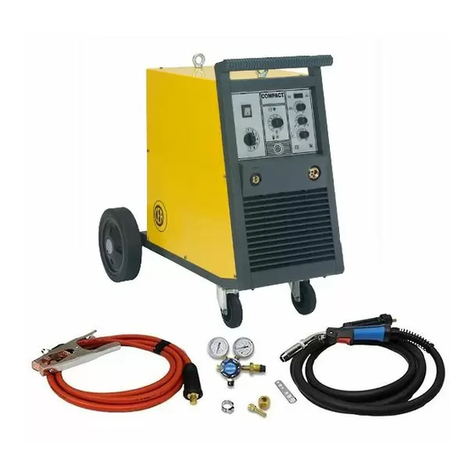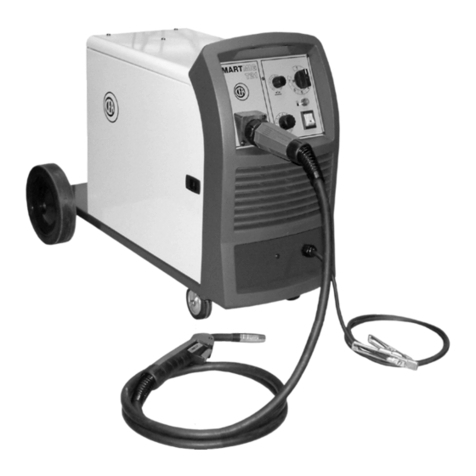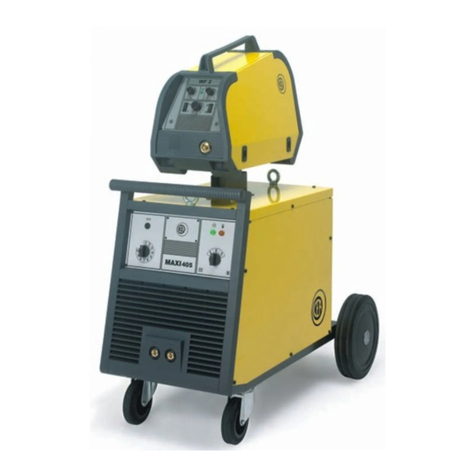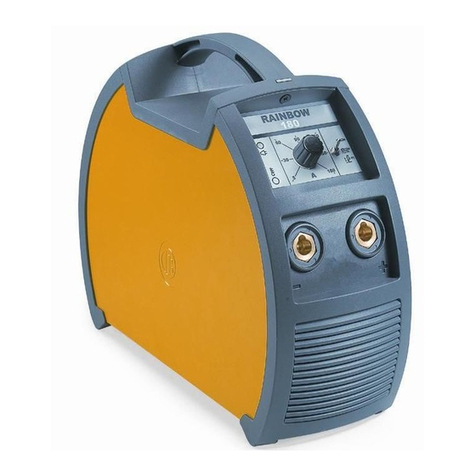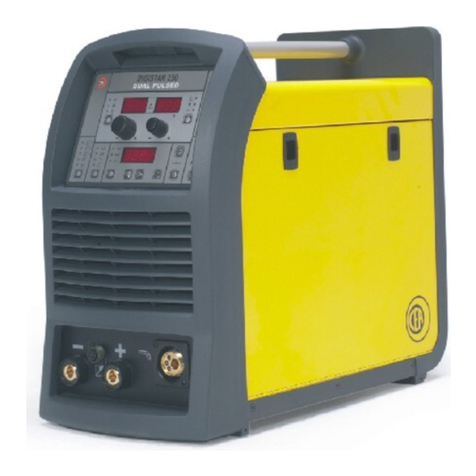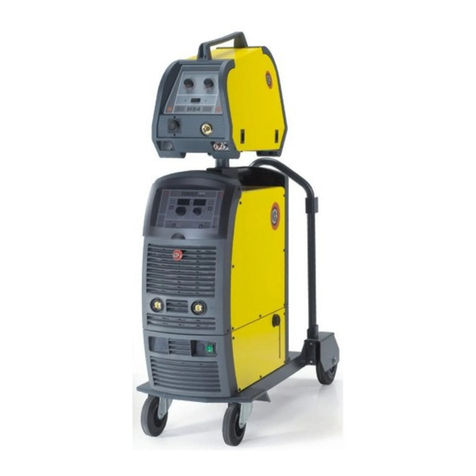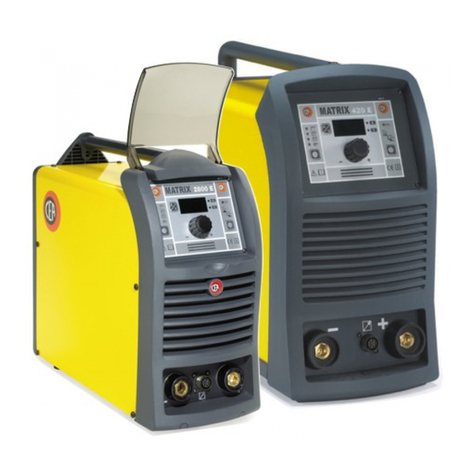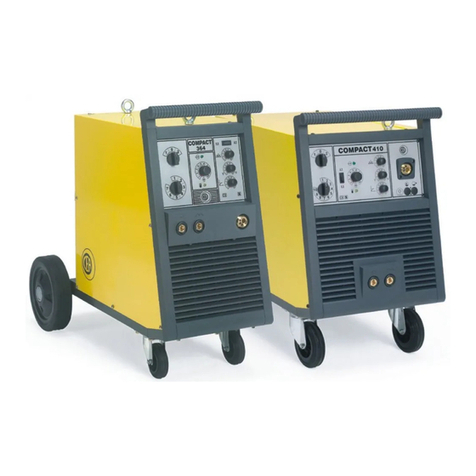
4
How to lift up the system
Strap the system safely and securely in the slings working from
the bottom, then lift up from the ground.
This welding machine has a robust handle built into the frame
for moving the equipment.
NOTE: These hoisting and transportation devices conform to
European standards. Do not use other hoisting and transpor-
tation systems.
Opening the packaging
The system essentially consists of:
• DIGITECH vision PULSE 3300 or 4000 or 5000 weld unit.
• Separately:
- HT4 wire-feeder unit (supplied separately).
- MIG-MAG welding torch (optional).
-
Wire-feeder/generator interconnection cable (supplied sep-
arately).
- Coolant unit for welding torch (optional).
- Trolley to carry it around (optional).
Perform the following operations on receiving the apparatus:
•
Remove the welding generator and all accessories and com-
ponents from the packaging.
•
Check that the welding apparatus is in good condition; other-
wise immediately inform the retailer or distributor.
• Check that all the ventilation grilles are open and that there
is nothing to obstruct the correct air flow.
Installation and connections
The installation site for the system must be carefully chosen
in order to ensure its satisfactory and safe use. The user is re-
sponsible for the installation and use of the system in accord-
ance with the producer’s instructions contained in this manual.
Before installing the system the user must take into consider-
ation the potential electromagnetic problems in the work area.
In particular, we suggest that you should avoid installing the
system close to:
• Signalling, control and telephone cables.
• Radio and television transmitters and receivers.
• Computers and control and measurement instruments.
• Security and protection instruments.
Persons fitted with pace-makers, hearing aids and similar
equipment must consult their doctor before going near a ma-
chine in operation. The equipment’s installation environment
must comply to the protection level of the frame.
The welding unit is characterized by the following classes:
• IP 23 S protection class indicates that the generator can be
used in both interior and exterior environments.
•
The “S” usage class indicates that the generator can be em-
ployed in environments with a high risk of electrical shocks.
This system is cooled by means of the forced circulation of air,
and must therefore be placed in such a way that the air may
be easily sucked in and expelled through the apertures made
in the frame.
Assemble the system in the following way:
• Assemble the trolley.
• Fixing the cooling unit to the trolley.
•
Fixing of the welding machine to the trolley and the cooling
unit (electrical and plumbing connections).
• Fitting the feeder unit to the generator.
• Connect up the welder to the mains.
•
Connect up the wire-feeder/generator interconnection cable.
• Connect up the welding cables.
Instructions for fitting the individual components / optional ex-
tras are contained in the relevant packaging.
Connection to the electrical supply
Connection of the machine to the user line (electrical cur-
rent) must be performed by qualified personnel.
Before connecting the welding machine to the mains pow-
er supply, make sure that rated voltage and frequency cor-
respond to those provided by the mains power supply and
that the welding machine’s power switch is turned to “O”.
Use the welder’s own plug to connect it up to the main pow-
er supply. Proceed as follows if you have to replace the plug:
•
3 conducting wires are needed for connecting the machine
to the supply.
•
The fourth, which is YELLOW GREEN in colour is used for
making the “GROUND” connection.
Connect a suitable load of normalised plug (3P+T) to the
power cable and provide for an electrical socket complete
with fuses or an automatic switch. The ground terminal
must be connected to the ground conducting wire (YEL-
LOW-GREEN) of the supply.
Table 2 shows the capacity values that are recommended for
fuses in the line with delays.
NOTE: Any extensions to the power cable must be of a suita-
ble diameter, and absolutely not of a smaller diameter than the
special cable supplied with the machine.
Usage norms
CONTROL APPARATUS (Fig. A)
Pos. 1 “DH” control panel.
Pos. 2 Fast coupling positive polarity.
Pos. 3 Fast coupling negative polarity.
Pos. 4 Mains switch. In the “O” position the welder is off.
Pos. 5 Connector for connecting the interconnection cable
or auxiliary welding controls.
Pos. 6 Fast coupling reverse polarity.
Pos. 7 Connector for connecting the cooling system.
Pos. 8 Mains cable.
Table 2
Model
DIGITECH vision PULSE
3300
DIGITECH vision PULSE
4000
DIGITECH vision PULSE
5000
MIG-MAG welding
Input power @ I2Max V 18,8 25,5 32
Delayed fuse (I2@ 60%) Ω25 30 40
Duty cycle @ X% (40°C) kVA 330 (40%) 400 (50%) 500 (50%)
Mains cable
Length
Section
mm
kg
4
4 × 2,5
4,5
4 × 4
4,5
4 × 6
Ground cable kg 50 50 70
